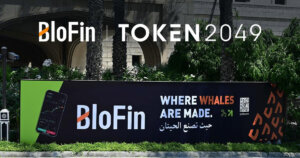 Monero Releases the Source Code For Its New GUI Wallet
Monero Releases the Source Code For Its New GUI Wallet Monero Releases the Source Code For Its New GUI Wallet

Photo by Keyur Hardas on Unsplash
With Monero preparing for another hard fork in the coming few days, the dev team has released the source code for its latest GUI Wallet— the Lithium Luna.
Monero is a collaborative open-source project that offers crypto enthusiasts with an array of unique features when compared to other big names in the digital market. Project code is updated twice a year which means that after the update, it no longer remains backward compatible.
Similarly, with the new update, Monero will revamp its current proof-of-work protocol so that any existing ASIC rigs will no longer be able to mine the currency.
A Scheduled Network Upgrade is Planned for April 6: https://t.co/1JQwQlA5di
— Monero || #xmr (@monero) March 28, 2018
Other developments from this latest release which are particularly noteworthy include:
1. Multi-Sig Support
Lithium Luna will serve as a multi-signature wallet which means that it can be controlled by more than one individual at any given time. However, for voluminous monetary transactions to be processed, the digital signatures of a majority of vested parties need to be obtained. Interestingly, multisig wallets also have the capacity to execute automated escrow deals.
2. Implementation of Sub-Addresses
Through the use of sub-addresses, Monero aims to make digital transactions outside of its native blockchain more air-tight and foolproof. Prior to the release of Lithium Luna, Monero wallets only possessed one receiving address.

In many cases, if the receiving address was published across two unique online stores, the identity of the recipient was revealed.
However, with this latest update, users have the option to generate infinite (un) linkable sub-receive addresses. This not only allows for more financial flexibility but also allows users to remain completely anonymous when operating outside the Monero blockchain.
3. Fluffy Blocks
As things currently stand, transactions taking place within the Monero ecosystem are quite resource-intensive and thus by implementing Fluffy Blocks, the synchronization of data-sets can take place at a much faster pace.
To be more specific, a Fluffy Block contains only the block header, transaction IDs, and in some cases, missing transactions. As a result of this, there is a substantial reduction in the volume of data that has to be relayed within the network.
To read up more on this latest release, users can visit the official Monero website. Similarly, the download link for the latest Monero Wallet can be found at www.getmonero.org.
For more information about Monero including price, market cap, volume and social media links, please see our Monero coin profile.






























































